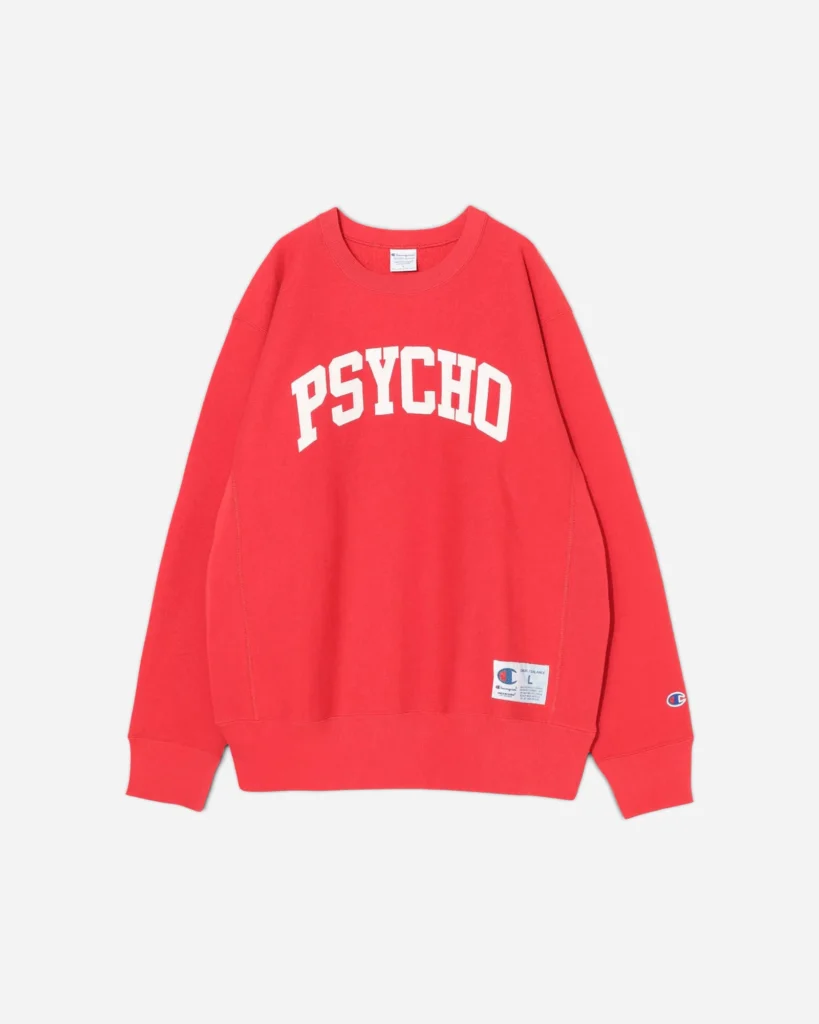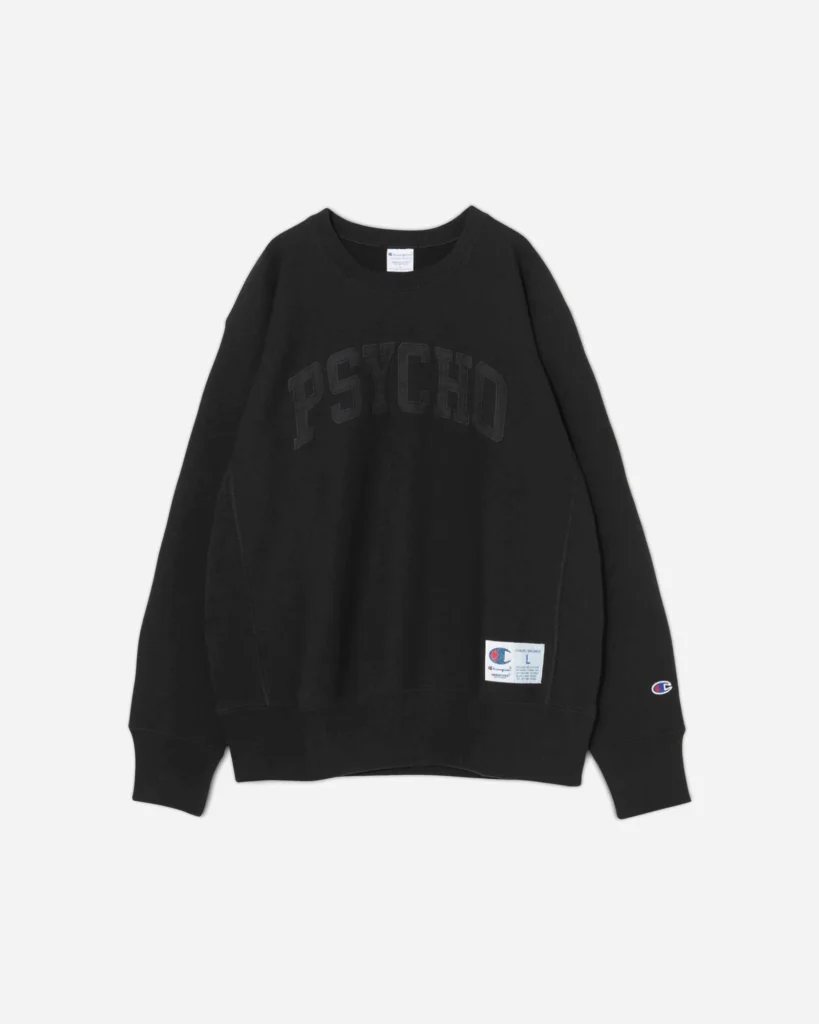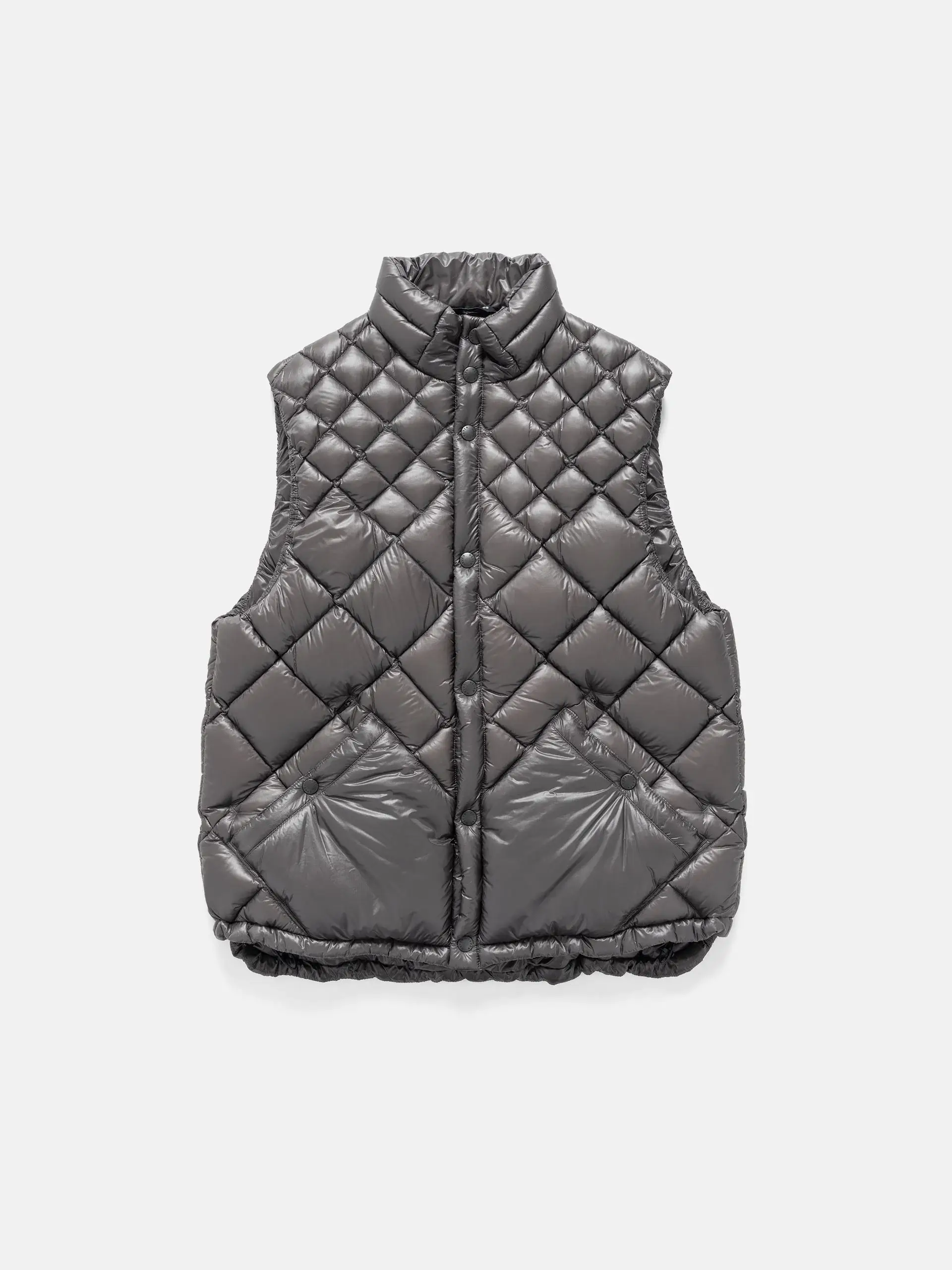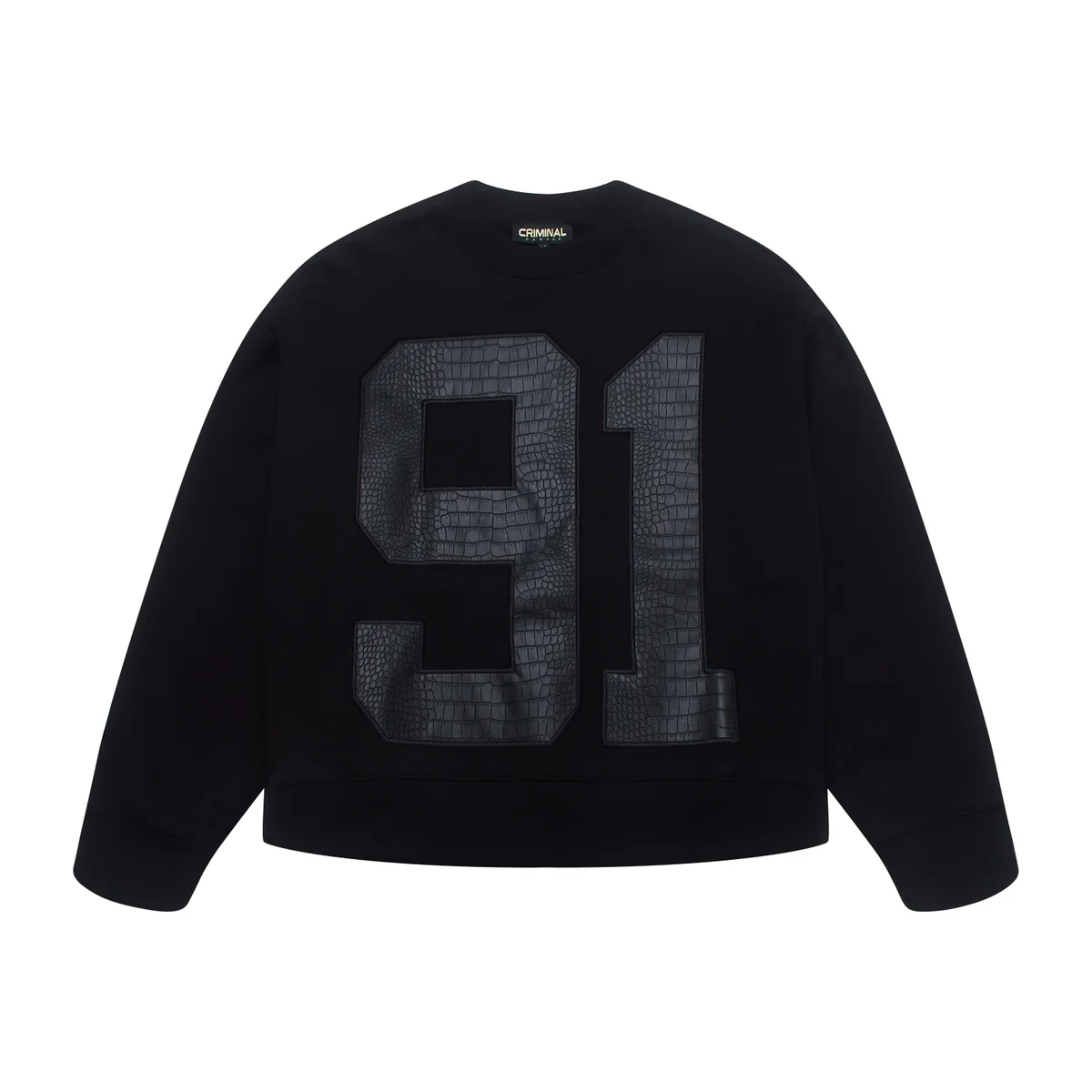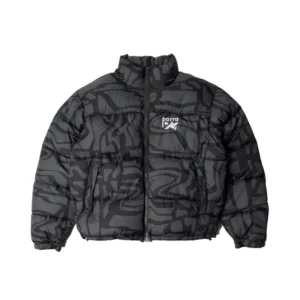There are connection that feel inevitable, and there are connections that feel like provocations — deliberate fractures in the expected order of things. The Undercover Men’s Champion Psycho Crewneck Sweatshirt lands unmistakably in the latter category. It sits at the intersection of heritage sportswear and conceptual Japanese fashion, a meeting point where athletic nostalgia rubs against Jun Takahashi’s darker, cerebral design language. This isn’t simply a sweatshirt; it’s an artifact of two worlds that rarely collide, a garment that uses familiarity as a gateway to distortion.
At first glance, the Psycho Crewneck reveals its split DNA. You immediately recognize Champion’s heavyweight fleece structure — a silhouette that has lived across gym lockers, college campuses, and American sidewalks for decades. Its softness is familiar, almost comforting. But Undercover doesn’t permit comfort to remain unchallenged. Takahashi’s imprint unsettles the garment just enough to reframe it, shifting it from sportswear into something more narrative-driven, more theatrical, more alive with tension.
The defining element is the “PSYCHO” graphic — bold, abrupt, slightly chaotic in its typography, sitting across the chest like a warning or a confession. True to Undercover’s ethos, it borrows not only from aesthetics but from psychological atmosphere. The word functions on multiple levels: as homage to Takahashi’s longstanding fascination with cinema, as commentary on fractured modern identity, and as a playful nod to the emotional volatility embedded in streetwear culture. Undercover has always been drawn to duality — beauty and fear, romance and violence, softness and severity — and the Psycho Crewneck translates that duality in language that is unmissable yet ambiguous.
Beyond the graphic itself, the garment emphasizes structure. Cut in a relaxed-yet-controlled fit, it maintains the rigidity of classic Champion fleece while allowing Undercover’s proportions to soften the boxiness. The shoulders drop slightly. The sleeves taper just enough to avoid slouching. The ribbing is clean and assertive, grounding the silhouette so it doesn’t drift into shapelessness. Every detail is calibrated to keep the wearer looking intentional rather than casual — a signature Undercover trait that transforms even the most common canvas into a considered fashion statement.
Color palettes tend toward Undercover’s signature moodiness: washed blacks, muted greys, and deep, desaturated tones that feel lifted from a noir film frame. Even when presented in brighter hues, the finish leans toward a patina of lived experience. The sweatshirt avoids the plasticky sheen of some modern streetwear drops; instead, it embodies a texture and tone that imagines itself already worn, already loved, already part of the wearer’s psychological landscape.
Inside, the construction remains unmistakably Champion. Heavyweight cotton fleecing lines the interior, creating a dense, insulating softness that feels engineered for longevity. This duality between inside and outside — rugged conceptualism layered over classic comfort — is central to the garment’s appeal. You tell yourself you’re buying it for the graphic, for the undercurrent of rebellion, for the story. But then you put it on and remember why Champion remains an icon: the comfort is undeniable.
Undercover’s influence is most apparent in the subtle deviations — irregular stitching choices, slightly offset printing, micro-distressing, or tonal shifts that break the symmetry. These small disruptions create a sense of artistic unrest, hinting that something about the garment refuses to settle neatly into one category. It echoes Takahashi’s seasonal collections, where clothing rarely behaves as decoration alone; it performs, provokes, and challenges the wearer to interpret it.
The Psycho Crewneck’s cultural placement is equally compelling. In an era where collaborations saturate the market, this pairing stands out because of its ideological contrast. Champion represents accessible Americana, the roots of athletic culture, the democratization of comfort. Undercover is cerebral, subcultural, often cryptic, and unafraid of darkness. When these two voices merge, the result is a garment that refuses to be neutral. It becomes a conversation piece — not loud in silhouette, but loud in implication.
It appeals to those who appreciate Japanese avant-street design, to lovers of graphic language, to collectors who understand Undercover’s cult status, and to fans of Champion who see the collab as a surprising evolution of a beloved staple. On the street, the Psycho Crewneck looks as natural layered under a bomber jacket as it does thrown casually over denim, styled with tailored trousers, or paired with technical garments. It adapts to subcultures without losing identity, which is part of its enduring strength.
There is humor in the piece too, albeit Undercover’s specific strain of humor — dry, slightly menacing, delivered with a straight face. The “PSYCHO” print feels like a self-aware jab at the melodrama of streetwear obsession, the intensity of fashion fandom, the emotional chaos of modern life. It’s the kind of statement that changes depending on who’s wearing it and who’s reading it. That malleability of meaning is one of the reasons Undercover graphics resonate so deeply: they do not dictate narrative; they invite interpretation.
What ultimately sets this sweatshirt apart is its refusal to compromise. It does not soften Undercover for Champion, nor does it dilute Champion for Undercover. Instead, it layers two vastly different identities and lets the tension remain visible. You feel that tension when you touch it — the luxurious weight of Champion’s fleece, the intellectual intensity of Undercover’s design, the strange harmony that results when two brands follow their own instincts rather than chasing trends.
In the crowded landscape of crewnecks, where every brand is eager to stamp a chest logo and call it a day, the Undercover Men’s Champion Psycho Crewneck Sweatshirt becomes something else entirely. It becomes fashion with subtext. Clothing with a raised eyebrow. A wearable blend of comfort, cinema, subculture, and psychological gesture.
And like all great Undercover pieces, it doesn’t just dress the body. It narrates the wearer. It lets them signal that they appreciate classics but crave disruption, that they understand the roots of streetwear but prefer its more conceptual edges, that they are unafraid of a little provocation woven into the cotton.
It’s not just a sweatshirt. It’s an attitude, stitched into fleece and declared across the chest — a paradox in fabric form, and unmistakably Undercover.
No comments yet.


